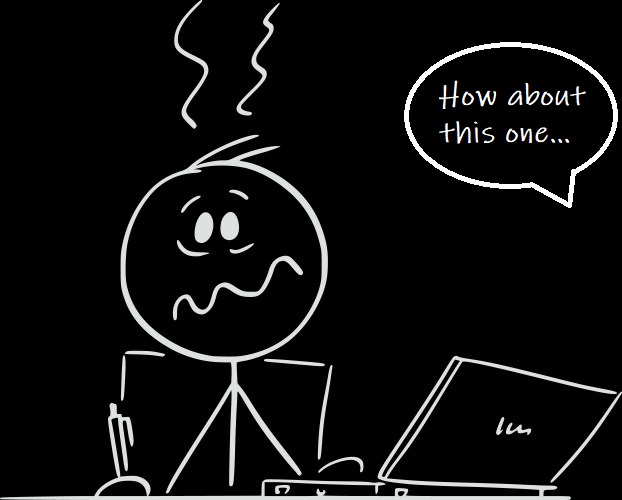True…But Also This
By Anthony Casperson
8-31-24
The YouTube presenter’s production team was making fun of him. For the video they decided to make him guess at the meaning of slang words from modern teenage vocabulary. Despite his eye rolling and complaints, the guy did okay. About 50%, if I recall correctly.
However, one of the lengthier sayings he couldn’t even begin to guess it. (I don’t even really remember what it was either.) But then, the production team explained the saying to him. They said that it came from a particular streamer. And even more, a single specific moment during a stream where someone said it.
It seems that those who watched that stream began to say it. But others—who had never heard the origin—began to say it as well. They have a vague sense of what it means because of the context of the early adopters of the saying, but not the whole idea behind it.
That made me wonder how often sayings like that get picked up without really understanding the original point of the saying. And will the words be so slowly modified over time that eventually, those who pick up that vocabulary won’t use it for the original purpose?
A number of biblical sayings have ended up with similar results in our day and age. Something that had a purpose in the bible, but because certain members of society who’ve mostly just picked up the cultural misunderstanding of the words, misuse the saying. And often, it ends up being thrown back in the faces of Christians with a particular definition that has very little connection to the bible they think they’re quoting.
One of the more common of these sayings that have taken hold of biblical terminology is, “Let the one who is without sin cast the first stone.” It’s often utilized in a manner that essentially says, “You’re not perfect either. So, leave me alone. And don’t judge me for my life choices.”
But for any who know the full context of the words Jesus spoke in John 8, the concept of then allowing a person to keep on doing what they were doing is totally foreign to it.
Let’s look at the early verses of John 8. Here, a woman is brought to Jesus by some of the cultural and religious elite of Israel. The woman’s probably just had a sheet wrapped around her because they’d brought her right from the bed where she’d committed the adultery.
While it might look like these scribes and Pharisees are trying to seek justice, they’re really trying to trap Jesus. Showing that he’s just as ruthless in religiosity as they are, or that he disobeys the Law of Moses. Either way, it doesn’t matter to them. They just want to have some way to lay blame at him. (Sounds kinda familiar, huh?)
They remind Jesus that the Law of Moses says that adulterous women are to be stoned to death. But there’s something that Jesus also knows about that command of God. It’s not just adulterous women who are commanded to be stoned to death, but both parties of the deed. (Because it’s kinda difficult to commit literal adultery without a second person, y’know.)
The scribes and Pharisees were misusing an old saying as well. And were themselves being unlawful for not also bringing the man. If they caught the woman in the act and brought her straight to Jesus, then they also knew who the guy was. And probably could’ve brought him as well.
(I guess a lot of people like to reshape old sayings to fit their purpose instead of the original meaning.)
At this, Jesus tells the crowd that the one who is without sin should cast the first stone. And while he’s not looking at them—because he’s writing something in the dirt—they leave. From the oldest to the youngest. The wisest to the least wise, maybe. Or the one who’s had the longest time for sinning to the one who’s had the least.
Jesus looks up and around, seeing only the woman. He asks, “Where’d everyone go? Did no one wanna throw stones around here?” The woman responds that none did. And Jesus replies that neither does he. The only one in the whole place who actually hadn’t sinned didn’t cast the first stone in this kangaroo court which failed to uphold God’s Law from the start.
Most would like for the story to end here. And those who like to use the saying, “Let the one without sin cast the first stone,” seem to think that it does. But there are a few more words to this scene with Jesus.
The same Jesus who said to the woman’s accusers, “Let him who is without sin among you be the first to throw a stone at her” also told the woman, “Go, and from now on sin no more.”
Jesus wasn’t denying the woman’s guilt. And he certainly wasn’t saying that she could keep on sleeping around with men who weren’t her husband. The point isn’t that because no other human being is perfect, then we can keep on making the same mistakes. There must be a change of behavior when we meet the forgiveness of Jesus.
He may choose to not cast the stone, but we should not continue on in our sin.
Go and sin no more is just as important as not throwing stones. And both showcase the point of God’s commands—to the people of Israel in the Law of Moses, and to those who follow Jesus. The laws and commands aren’t there to condemn the guilty to the utmost degree, but instead they’re given to call us to proper relationship to God.
The statement of punishment is there to call us to returned relationship first and foremost. And only if we remain unrepentant—if we try to continue on doing things our own way—then the judgement is there. A consequence for refusing the graceful hand of God.
The call for the one who is without sin to cast the first stone is truly there. And no one—other than Jesus—is without sin. But also we imperfect human beings should go and sin no more, once we’ve come face to face with the only one who has no sin. A lack of stone throwing doesn’t mean we’re free to continue our own sin.
So, now that we’ve seen and heard Jesus, let’s not concentrate on whether or not stones will be thrown, but rather go and sin no more.



